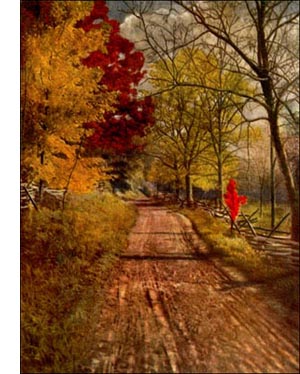Western Hemlock Tree
 Western Hemlock (Tsuga heterophylla, Sarg.)-Noble pyramidal tree, 100 to 200 feet high, 6 to 10 feet in diameter, with drooping, horizontal branches and feathery tip. Bark reddish brown, with broad, scaly, interrupted ridges and shallow fissures. Wood tough, durable, hard, light, strong, brown. Buds brown, ovate, small. Leaves grooved on top, lustrous, pale below, rounded at tip; petioles slender. Flowers : monoecious, terminal, solitary; staminate yellow; pistillate purple. Fruit oval, pointed cones 1 inch long; scales often constricted in the middle, broad, thin. Preferred habitat, moist valleys and uplands from tidewater to 6,000 feet elevation. Distribution, southeastern Alaska to Cape Mendocino in California; east to Montana and Idaho. Uses: Wood used chiefly in building; bark for tanning. Indians eat a cake made from the inner bark. Successfully used for ornamental planting in Europe. Not hardy in our Eastern States.
Western Hemlock (Tsuga heterophylla, Sarg.)-Noble pyramidal tree, 100 to 200 feet high, 6 to 10 feet in diameter, with drooping, horizontal branches and feathery tip. Bark reddish brown, with broad, scaly, interrupted ridges and shallow fissures. Wood tough, durable, hard, light, strong, brown. Buds brown, ovate, small. Leaves grooved on top, lustrous, pale below, rounded at tip; petioles slender. Flowers : monoecious, terminal, solitary; staminate yellow; pistillate purple. Fruit oval, pointed cones 1 inch long; scales often constricted in the middle, broad, thin. Preferred habitat, moist valleys and uplands from tidewater to 6,000 feet elevation. Distribution, southeastern Alaska to Cape Mendocino in California; east to Montana and Idaho. Uses: Wood used chiefly in building; bark for tanning. Indians eat a cake made from the inner bark. Successfully used for ornamental planting in Europe. Not hardy in our Eastern States.This greatest of all the hemlocks dominates the magnificent forests of the Pacific coast plain, in size as well as in numbers. It extends east into Idaho and Montana, and north into British Columbia. The tideland spruce is its companion in the lowlands. Superb trees are found on the mountains at an altitude of 6,000 feet, but only in moist situations. On dry, high ridges, the tree is stunted. But in the rich river valleys, with the breath of the Japan current to make the air humid, this hemlock is a giant handsome, graceful, the delight of the artist and the lumberman; the most superb and the most useful of the hemlocks.
The root system of this tree is remarkably copious and aggressive. Mosses often a foot in thickness and saturated with moisture clothe the fallen trunks and other rubbish in those deep forests in the neighbourhood of Vancouver. The light seeds of the hemlocks often germinate on some elevated arm of a giant tree long dead. Such a mistake will first be discovered by the roots which go down until they anchor the tree in the earth. The dead trunk rots away, and the growing tree stands on stilts of its own sturdy roots, as confident and thrifty as any of its neighbours.
The little cones of the Western hemlock have scales like scallop shells, marked with radiating lines. This is before they loosen. Afterward each scale shows a narrow neck behind this "shell," and a long blade extending backward.
This tree has the strongest and most durable wood of all the hemlocks. It is a staple commercial lumber on the coast, lumber authorities claiming that it is harder, heavier and otherwise superior to the Eastern hemlock.